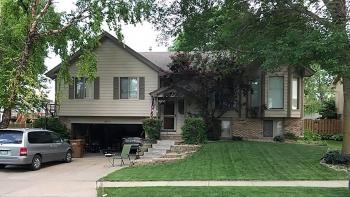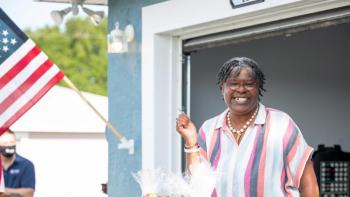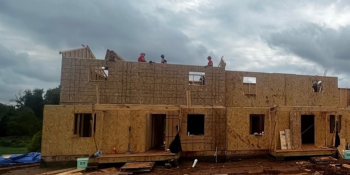
Stronger than ever
Kentucky families build new homes after devastating tornadoes
A tornado outbreak crossed over several central and southern U.S. states in 2021, leaving widespread damage and devastation in its wake. In the aftermath, families in two of the impacted Kentucky communities, Bowling Green and Dawson Springs, partnered with Habitat for Humanity to build back stronger than ever.
“In Bowling Green, there were over 475 housing units that were destroyed or damaged beyond repair during the event,” says Rodney Goodman, Habitat Bowling Green/Warren County executive director.
Residents also faced challenges like job loss, loss of child care and higher rents due to an increased demand for housing after the storm. “While there were some who were directly displaced, every family in Bowling Green was affected in some way by the tornado,” Rodney says.
In nearby Dawson Springs, families were similarly left reeling after the tornado outbreak. “Dawson Springs is a very small town with about 2,500 people,” says Heath Duncan, Habitat Pennyrile Region executive director. “Two-thirds of the town was destroyed, with about 625 houses destroyed or damaged. The city park was also destroyed.”
Heath says that much of the housing destroyed in Dawson Springs during the tornado outbreak was rental property, and many landlords chose not to rebuild. “We began to notice that once the landlords departed, they would often extend the opportunity to purchase the land to the current tenants, or alternatively, they might sell it at a significantly reduced price,” he says. “So some of the tornado survivors we partnered with, already had a lot, or a lot promised to them.”
A place to call home
Habitat affiliates in Bowling Green and Dawson Springs incorporated blitz builds into their long-term disaster recovery efforts. Starting in July 2022 in Bowling Green, 10 families helped build their own homes alongside volunteers. Ten families also participated in a blitz build in Dawson Springs the following fall. Both events were sponsored in part by The Home Depot Foundation, while members of Team Depot, The Home Depot’s associate volunteer force, volunteered to help the families build their homes.
For 14 years, Jerry lived in his home in Dawson Springs until it was destroyed during the tornado outbreak.
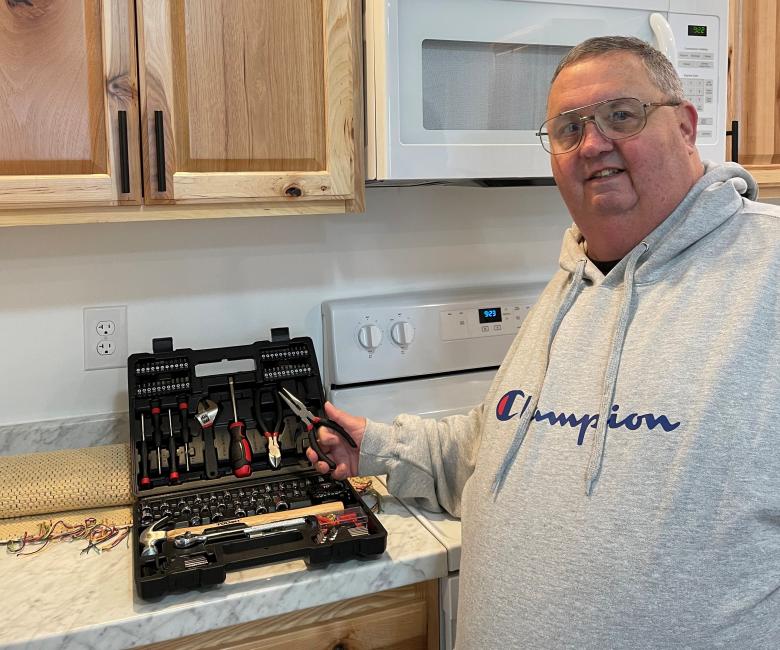
After a tornado destroyed his home in Dawson Springs, Kentucky, Jerry was able to partner with his local Habitat to rebuild.
Team Depot volunteers helped him build his new Habitat Pennyrile home. Now Jerry has a Habitat home on the same land where his old home once stood. “My experience with Habitat and all the volunteers was great,” Jerry says. “They were easy to work with and kept me informed on how things were coming along. I feel blessed in so many ways!”
Jamie Robinson-Melcher, a store manager for The Home Depot and a Team Depot captain, remembers meeting future Habitat homeowners and their families while volunteering with Habitat Bowling Green/Warren County.
“I can remember this little girl; she had beautiful brown eyes and long brown hair. She was telling her story about how terrified she was that night, and goodness, as a mom it just pulls at your heart.”— Jamie Robinson-Melcher, store manager for The Home Depot and a Team Depot captain
“Knowing that we were making an impact on the lives of a person that we can meet and we could see,” Jamie continues, “And seeing the excitement that they had knowing they were going to have a place to call home once those builds were completed was absolutely impactful.”
Responding together when the need arises
By working alongside families affected by disaster, Habitat and The Home Depot Foundation have helped advance housing affordability during a time when it’s needed the most. Since 2021, The Home Depot Foundation has provided nearly US$2 million to support Habitat’s efforts to help families impacted by disasters. The Foundation has also funded Habitat’s Repair Corps program since 2012 to help build, repair or rehabilitate more than 1,800 homes in partnership with U.S. military veterans and their families. During the builds in Bowling Green and Dawson Springs, The Home Depot Foundation helped support construction costs and capacity building.
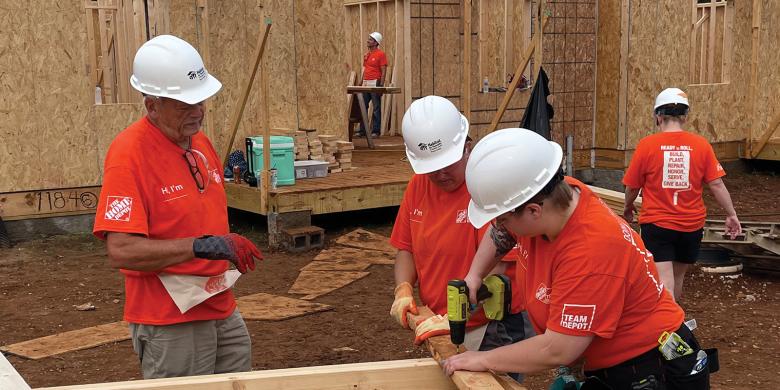
Team Depot volunteers worked alongside future Habitat homeowners to help build 10 homes in Bowling Green, Kentucky.
“The notable aspect of The Home Depot Foundation funding was the inclusion of capacity funds, which proved invaluable in situations where there was a sudden need for additional personnel, trucks and equipment to construct numerous houses,” Heath says. “Their assistance in that regard is not something we typically encounter in our regular funding sources.”
“Having that funding from The Home Depot Foundation kind of helped us bridge a gap,” Rodney agrees. “Everybody wants to fund houses. But it takes people to make that happen.”
